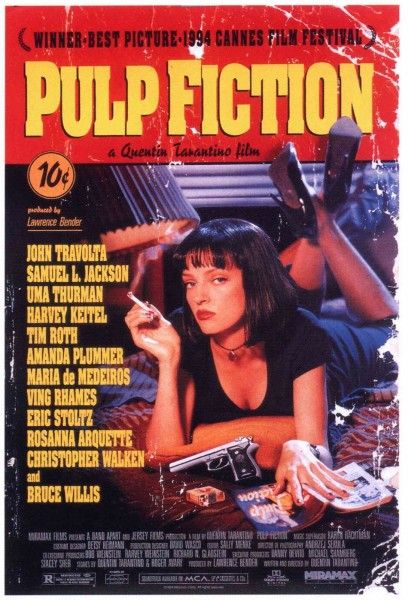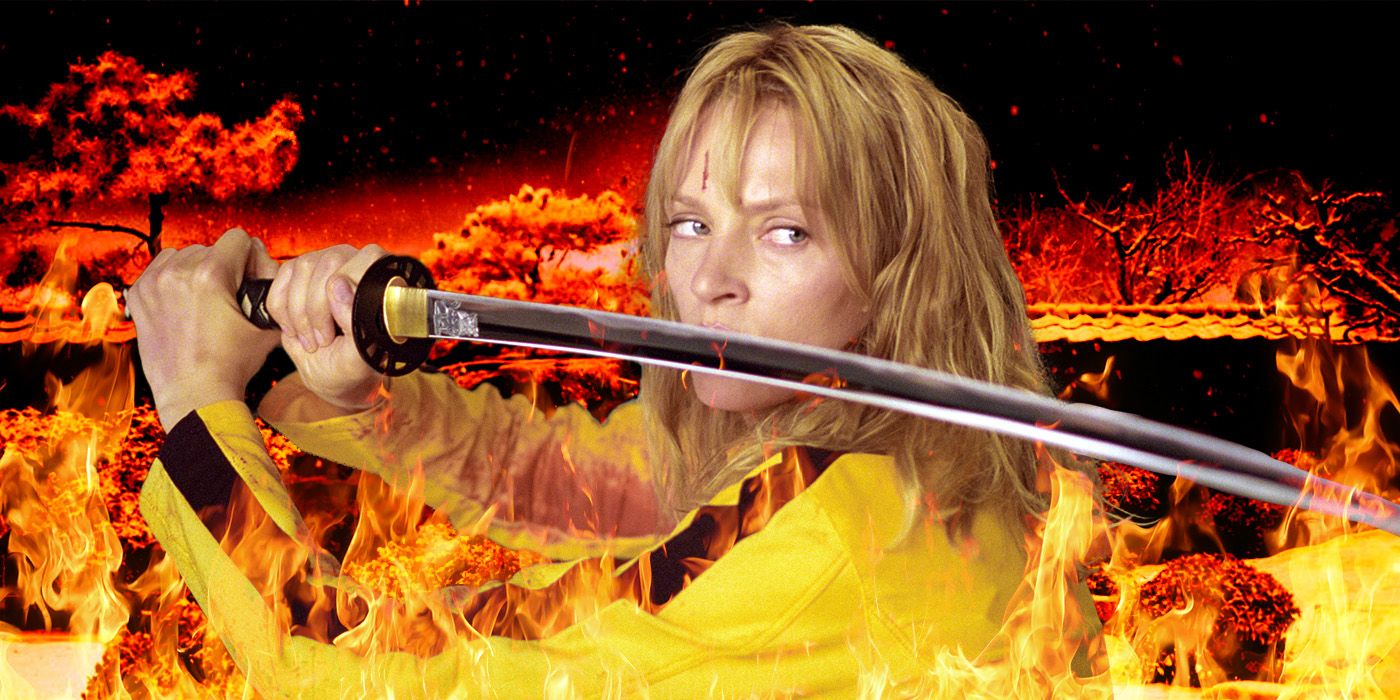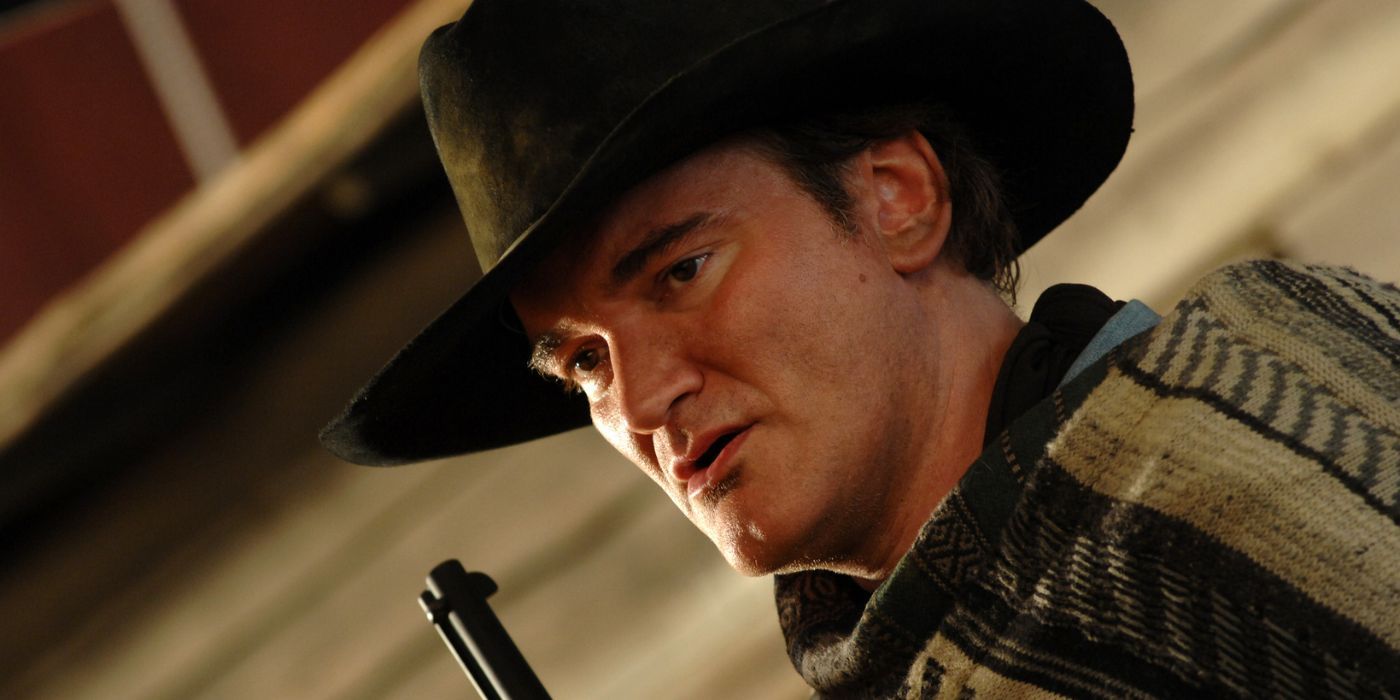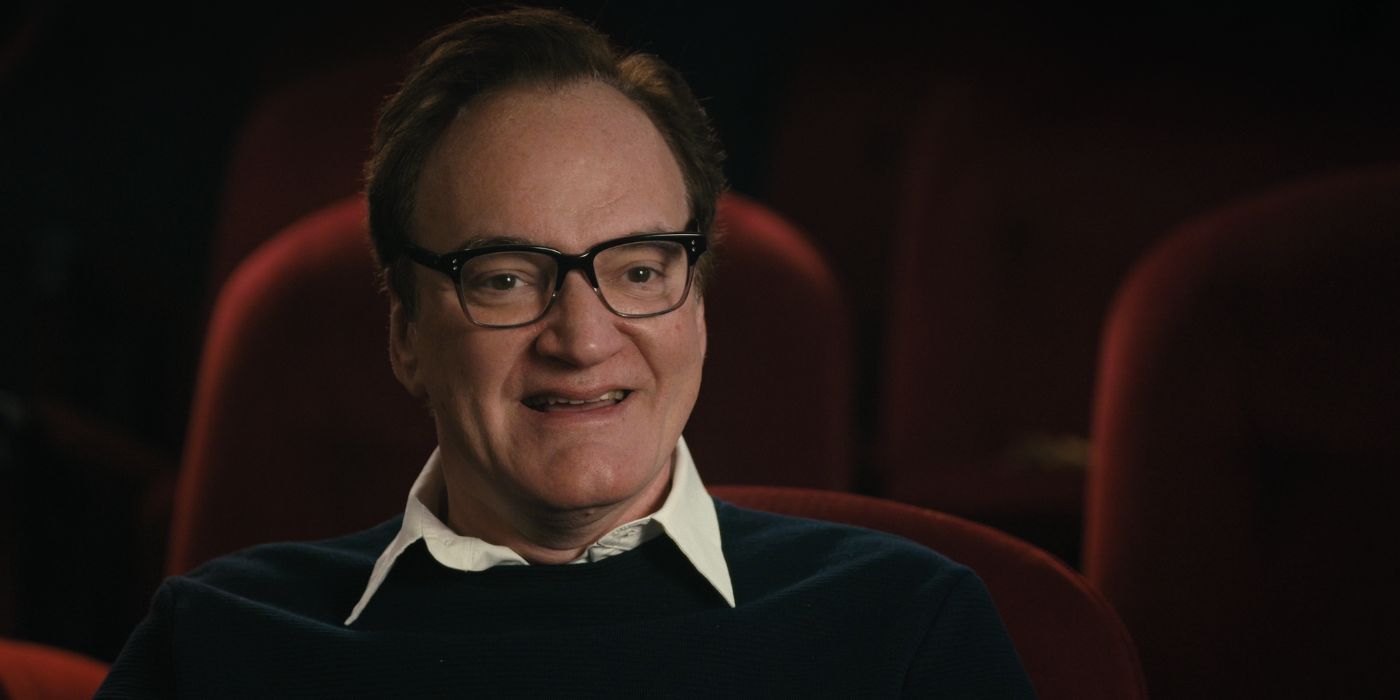The Big Picture
- Quentin Tarantino's filmography comprises two distinct universes - a "realer than real" one and a "movie universe."
- Characters in the "realer than real" universe watch movies from the "movie universe" (e.g., From Dusk Till Dawn or Kill Bill).
- Interconnected Tarantino films like Pulp Fiction hint at the duality of his universes, adding depth and intrigue.
Quentin Tarantino has a hard time shutting his mouth. That's why we love him though, right? Ever since his first film, Reservoir Dogs, premiered at the Sundance Film Festival in January 1992, Tarantino has made a name for himself in two ways. For one, he makes some of the coolest movies that you'll ever see, filled with bangin' needle drops, slick dialogue, and over-the-top, goofy violence. He also makes a habit of talking way too much about movies. His movies, other people's movies, you name it. He's always got something to say about what makes a hidden exploitation gem great, why the '80s were a terrible decade for film, how he and David Fincher are not alike, and so, so much more. As for his own works, Tarantino has proven that he likes to play with his audiences' desires a bit. It seems to be a good bit of fun for him to publicly flirt with the idea of, say, tackling an R-rated Star Trek, finally getting Kill Bill Vol. 3 off the ground, or maybe bringing the Vega Brothers together on-screen. Fans eat it up, and not only does it seem that he knows this, but it appears that he enjoys prodding them.
One of the things that Tarantino and his fans seem to enjoy discussing the most is the cinematic universe that he has built for himself. We're far beyond theory at this point — the connections are undoubtedly deep. You've got character relations in the aforementioned Vega Brothers, as well as in-world brands like Big Kahuna Burger and Red Apple cigarettes. By now, it cannot be denied that loud connections are tethering these worlds together. Tarantino doesn't even try to dispel these ideas, though. As a matter of fact, he leans into them... but with a twist. Essentially, he hasn't just made up one universe, but two. There's the "realer than real" universe that a majority of his characters inhabit. Then, there's the "movie universe," which is made up of a few movies in his filmography that characters from the "realer than real" go watch when they go to the movies. This dual universe idea is both an admirably bizarre and creative concept, but could there be a more Tarantino way of explaining all of this? The answer is "no."

Pulp Fiction
The lives of two mob hitmen, a boxer, a gangster and his wife, and a pair of diner bandits intertwine in four tales of violence and redemption.
- Release Date
- September 10, 1994
- Director
- Quentin Tarantino
- Cast
- John Travolta , Samuel L. Jackson , Tim Roth , Amanda Plummer , Eric Stoltz , Bruce Willis
- Runtime
- 154
Quentin Tarantino's "Tarantino-verse" is Simpler and More Complex Than Most Cinematic Universes
The Tarantino-verse — if you're fancy — is an undeniably fun prospect. In a day when audiences are exhausted by the closely connected cinematic worlds of Marvel, Godzilla, and the Dark Universe (wait... what?), it's nice to have one that doesn't make a show of it. It doesn't affect your film-going experience whether you know why it's fun that Rick Dalton (Leonardo DiCaprio) advertises Red Apple cigarettes, or if you get that Tim Roth's Hateful Eight character, Pete Hicox, is related to Michael Fassbender's Archie Hicox from Inglourious Basterds. At least once in a movie, Tarantino finds a way to shrug one or two of these little Easter eggs off and call it a day. You can enjoy the viewing experience without them, but every little reference that you do understand is gravy.
Still, fans have held onto these references for dear life. The so-called "Tarantino-verse" is a term that audiences have created, not the filmmaker himself. Because of all of these familial relations and reappearing brands, it has been assumed that all of his works took place in the same world. After all, why would anyone assume otherwise? Well, it seems as though the man himself would beg to differ. There isn't just one universe... there are two!
Two Different Universes Make Up Tarantino's Filmography
In a 2016 interview with The Project, Tarantino explained this concept by saying:
"There's the realer than real universe, alright, and all the characters inhabit that one. But then there's this movie universe. And so From Dusk Till Dawn, Kill Bill, they all take place in this special movie universe. So basically when the characters of Reservoir Dogs or Pulp Fiction, when they go to the movies, Kill Bill is what they go to see. From Dusk Till Dawn is what they see."
First and foremost, it would be best to lay out what exactly qualifies as the "realer than real" universe in Tarantino's filmography. Keep in mind, he's also including movies that he was the screenwriter for. These rules aren't just confined to his directorial efforts. By this logic, it would appear that Reservoir Dogs, True Romance, Pulp Fiction, Death Proof, Inglorious Basterds, Django Unchained, The Hateful Eight, and Once Upon a Time in Hollywood make up the "realer than real." Okay, that was easy — now buckle up.

'Kill Bill' Was Conceived on the Set of 'Pulp Fiction'
Here's the unlikely link between these two Tarantino classics.So, you know all of those times in Tarantino films when characters have gone to the theater or talked about a movie that they enjoyed? Well, essentially, there's a smaller subset of his filmography that qualifies as some of the pictures that people in his world would go to see. In short, he refers to this as the "movie universe." He already referenced Kill Bill and From Dusk Till Dawn, but Natural Born Killers seems to fall in with this logic as well. Aside from those three, the movies that Death Proof's Stuntman Mike (Kurt Russell) made would qualify, as well as the films that we see in Inglorious Basterds.
The movies and TV shows in Once Upon a Time make for interesting cases. Some of them are of non-Tarantino invention — those that Sharon Tate (Margot Robbie) starred in, that Roman Polanski (Rafał Zawierucha) directed, some of the shows that Rick Dalton appeared in, and more, are all true to life, but also apparently occupy the "movie universe" that Tarantino described in his 2016 interview with The Project. Several Tarantino-originated pictures are referenced in Once Upon a Time that would also occupy the "movie universe," particularly those that Rick Dalton starred in (one of which features the amazing title Operazione Dyn-O-Mite!). So, in the end, Rick Dalton, Cliff Booth (Brad Pitt), Sharon Tate, and the rest of the cast all live in the "realer than real," but the movies and TV shows that they make are in the "movie universe." Man, this whole two universes idea is tricky.
'Pulp Fiction' Lays Out the Best Way to Look at the Two Universes
There's one easy example to look to when you're trying to wrap your head around the "realer than real" and "movie" universes. In Pulp Fiction, when Mia Wallace (Uma Thurman) and Vincent Vega (John Travolta) are sipping on five-dollar milkshakes at Jack Rabbit Slims, she describes a failed TV pilot that she shot called Fox Force Five. The descriptions that she gives to each female agent might not have meant anything to audiences in 1994. Why would they? Well, by the time the Kill Bill movies came out in the early 2000s, the little bios that Wallace gave each character very clearly mirror several characters that we see in Kill Bill. In short, Mia, who occupies the "realer than real" world, references creations found in Kill Bill, which is in the "movie universe." So, if Fox Force Five failed as a TV show, maybe someone in Mia's world went ahead and made it into a two-part martial arts western just a few years later. I wonder if Mia liked it?
Whether or not Tarantino intended to pull that stunt when he was writing Pulp Fiction, we'll never truly know. That said, it's still a fun theory for his fans to geek out about. Clearly, the man himself has fun with it too. As we will inevitably continue to receive more cinematic universes, let's hope that more filmmakers take Tarantino's winking approach. Not only is it more rewarding, but it's only for the real ones to catch! Don't be a fake fan!
Pulp Fiction is available to watch on Max in the U.S.


